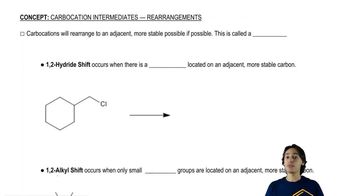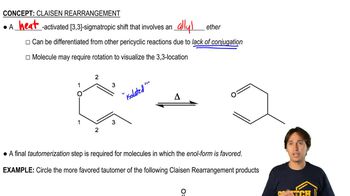Here are the essential concepts you must grasp in order to answer the question correctly.
Carbocation Stability
Carbocations are positively charged carbon species that can be classified based on their stability: primary, secondary, and tertiary. Tertiary carbocations are the most stable due to hyperconjugation and inductive effects from surrounding alkyl groups. Understanding the stability of carbocations is crucial for predicting their behavior, including whether they will rearrange to form more stable structures.
Recommended video:
Determining Carbocation Stability
Carbocation Rearrangement
Carbocation rearrangement occurs when a carbocation shifts to a more stable form, often through hydride or alkyl shifts. This process is driven by the stability of the resulting carbocation, which can lead to the formation of a more stable tertiary carbocation from a less stable primary or secondary one. Recognizing potential rearrangements is essential for predicting reaction pathways in organic chemistry.
Recommended video:
Understanding why carbocations shift.
Mechanism of Rearrangement
The mechanism of carbocation rearrangement typically involves the migration of a hydrogen atom or an alkyl group to the positively charged carbon. This process can be illustrated through curved arrows in reaction mechanisms, showing the movement of electrons. Understanding these mechanisms helps in visualizing how carbocations evolve during reactions and aids in predicting the products formed.
Recommended video:
Definition of Claisen Rearrangement

 Verified step by step guidance
Verified step by step guidance Verified video answer for a similar problem:
Verified video answer for a similar problem:



 0:47m
0:47m